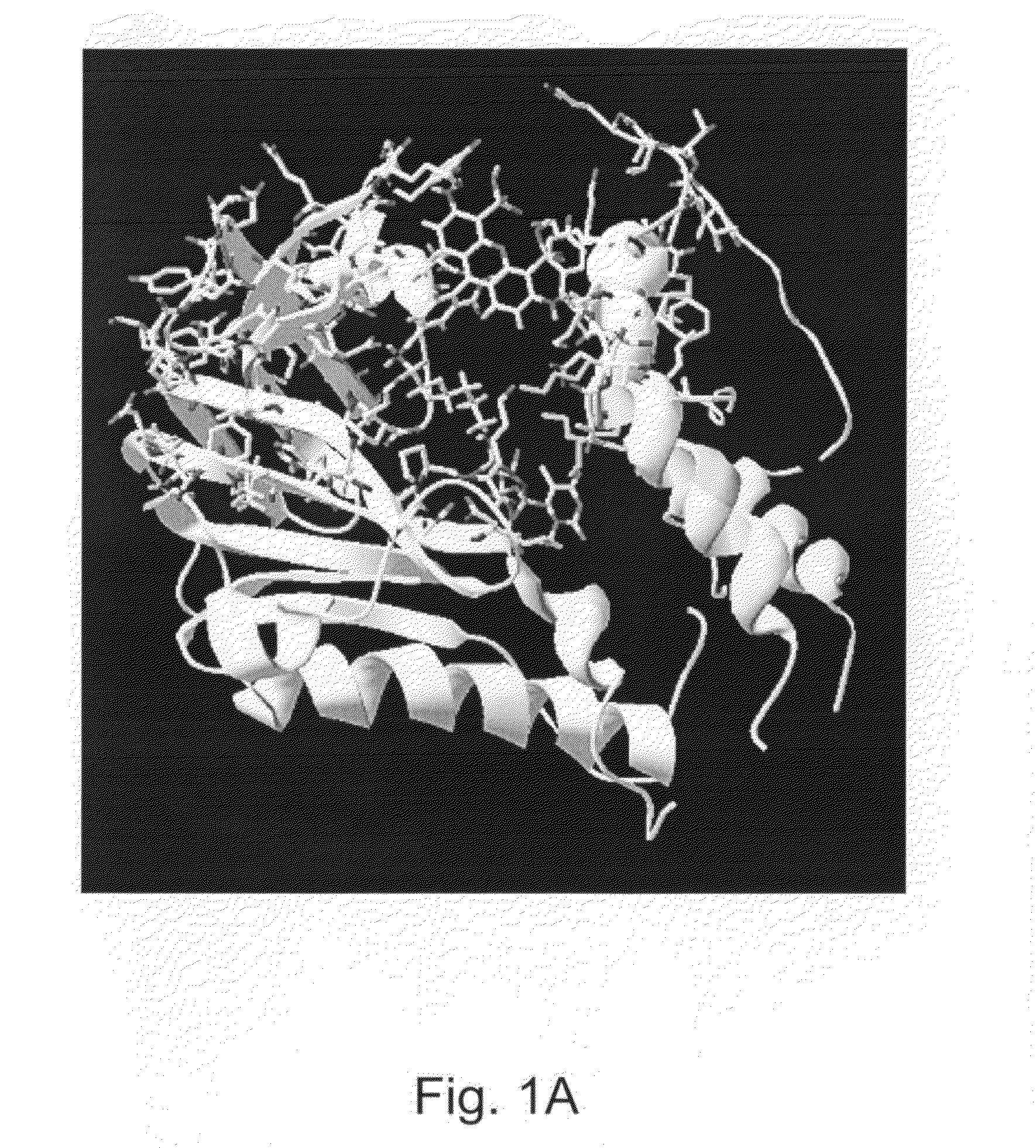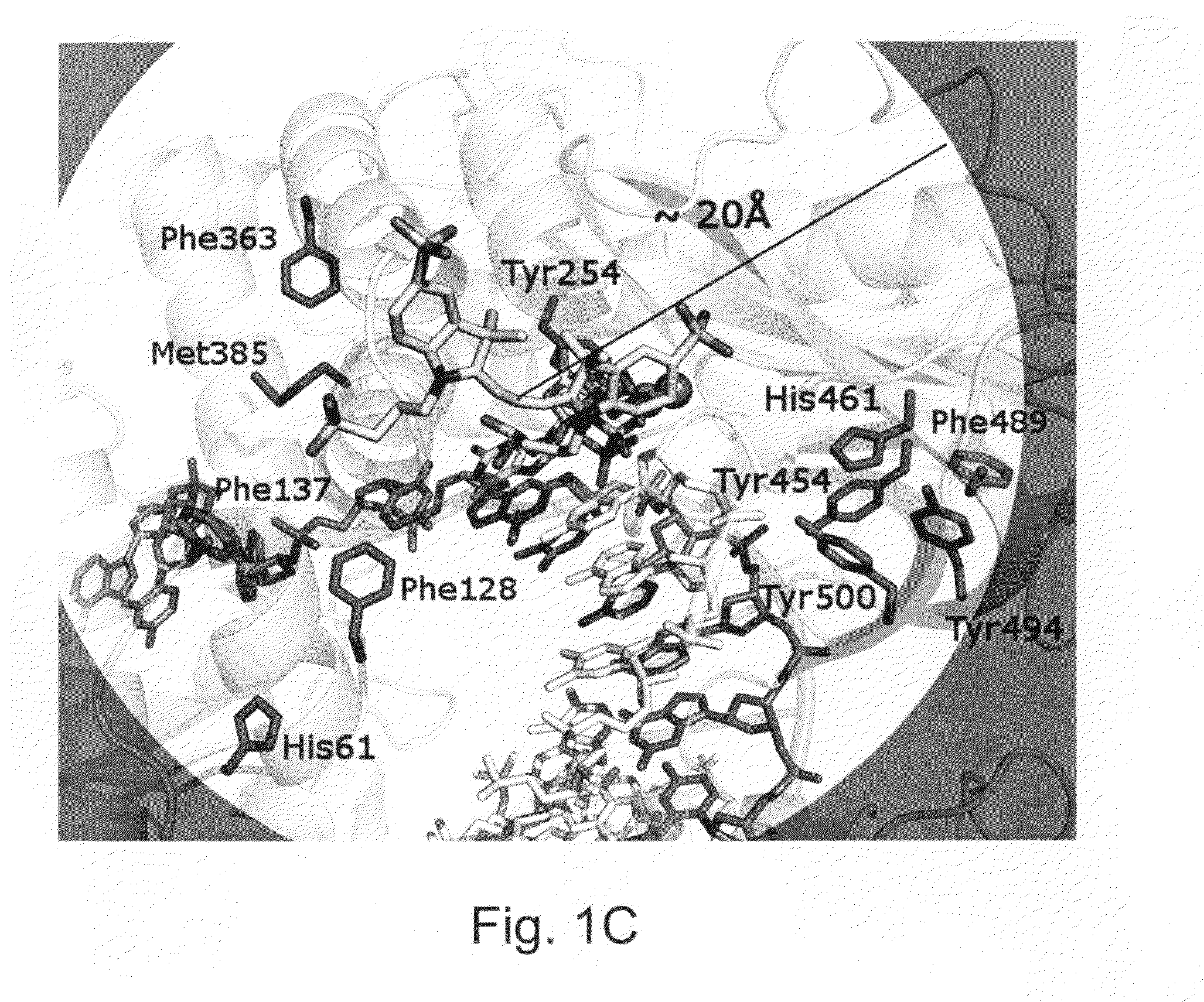Enzymes resistant to photodamage
a technology of enzymes and photodamage, applied in the field of enzymes resistant to photodamage, can solve the problems of biochemical reactants in reaction mixtures containing components that are typically damaged and/or inactivated, and achieve the effects of reducing oxidation, and reducing the number of reactive species
- Summary
- Abstract
- Description
- Claims
- Application Information
AI Technical Summary
Benefits of technology
Problems solved by technology
Method used
Image
Examples
example
96 Well Format Flat-Glass Photodamage Assay
[0222]Minimizing the effects of photodamage in an analysis that makes use of optically detectable labeling groups is possible when the analysis is performed under conditions in which the reactants, e.g., enzymes, are present far in excess, e.g., where the number of enzyme molecules that do not sustain photodamage generally outnumber the enzyme molecules that are damaged by optical energy. However, an increasing number of analyses are performed with single enzyme molecules or with very few enzyme molecules. When fewer enzyme molecules are present in a reaction, damage to any one enzyme, e.g., from exposure to light sources or fluorescent detection, can have a detrimental impact on the operation of the analysis, e.g., reducing read length.
[0223]For example, in real-time sequencing by synthesis (SBS) technologies, detecting the incorporation of a nucleotide into a sequencing product entails the immobilization of, e.g., a single DNA polymerase ...
PUM
| Property | Measurement | Unit |
|---|---|---|
| Tm | aaaaa | aaaaa |
| volumes | aaaaa | aaaaa |
| diameter | aaaaa | aaaaa |
Abstract
Description
Claims
Application Information
 Login to View More
Login to View More - R&D
- Intellectual Property
- Life Sciences
- Materials
- Tech Scout
- Unparalleled Data Quality
- Higher Quality Content
- 60% Fewer Hallucinations
Browse by: Latest US Patents, China's latest patents, Technical Efficacy Thesaurus, Application Domain, Technology Topic, Popular Technical Reports.
© 2025 PatSnap. All rights reserved.Legal|Privacy policy|Modern Slavery Act Transparency Statement|Sitemap|About US| Contact US: help@patsnap.com



